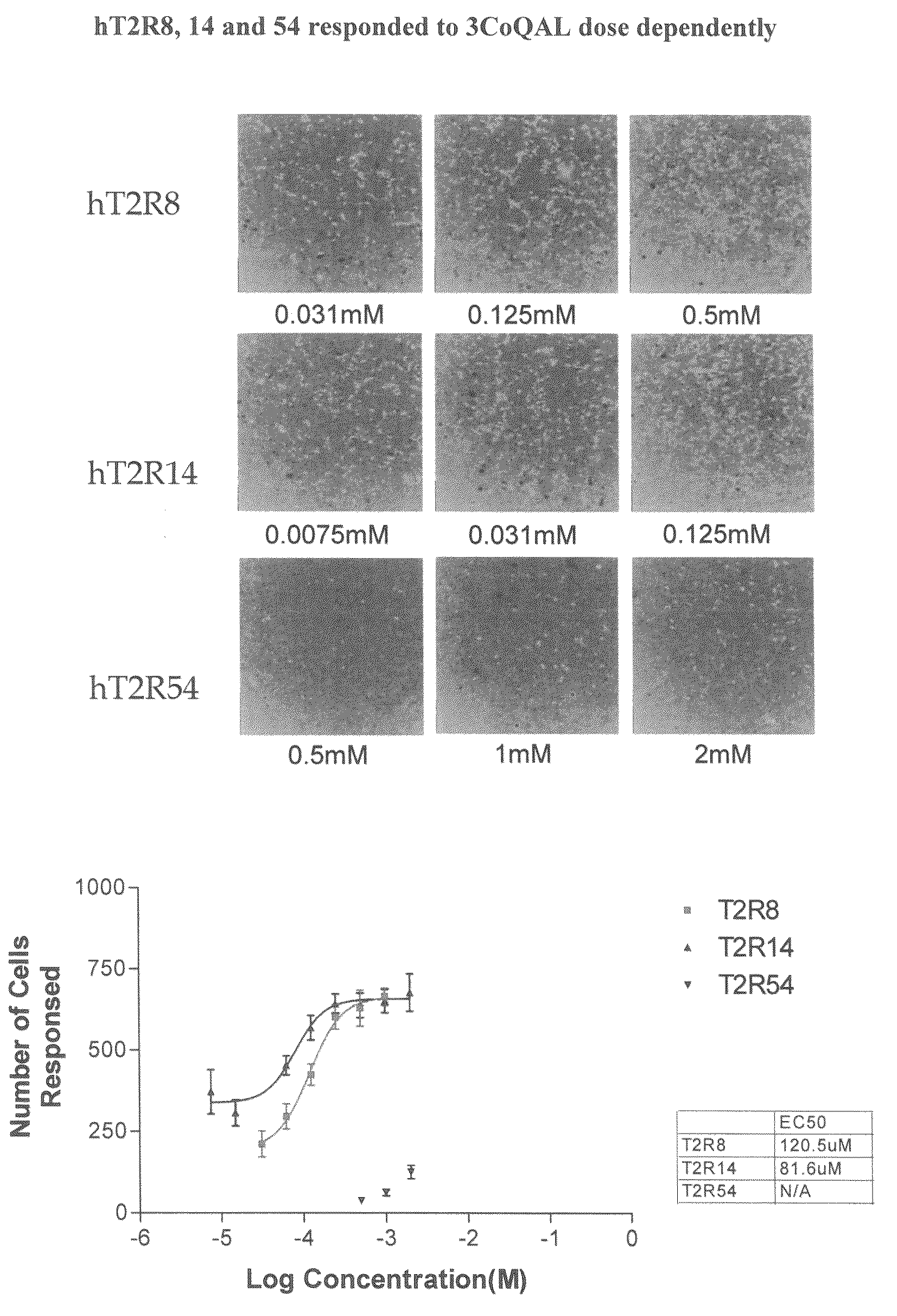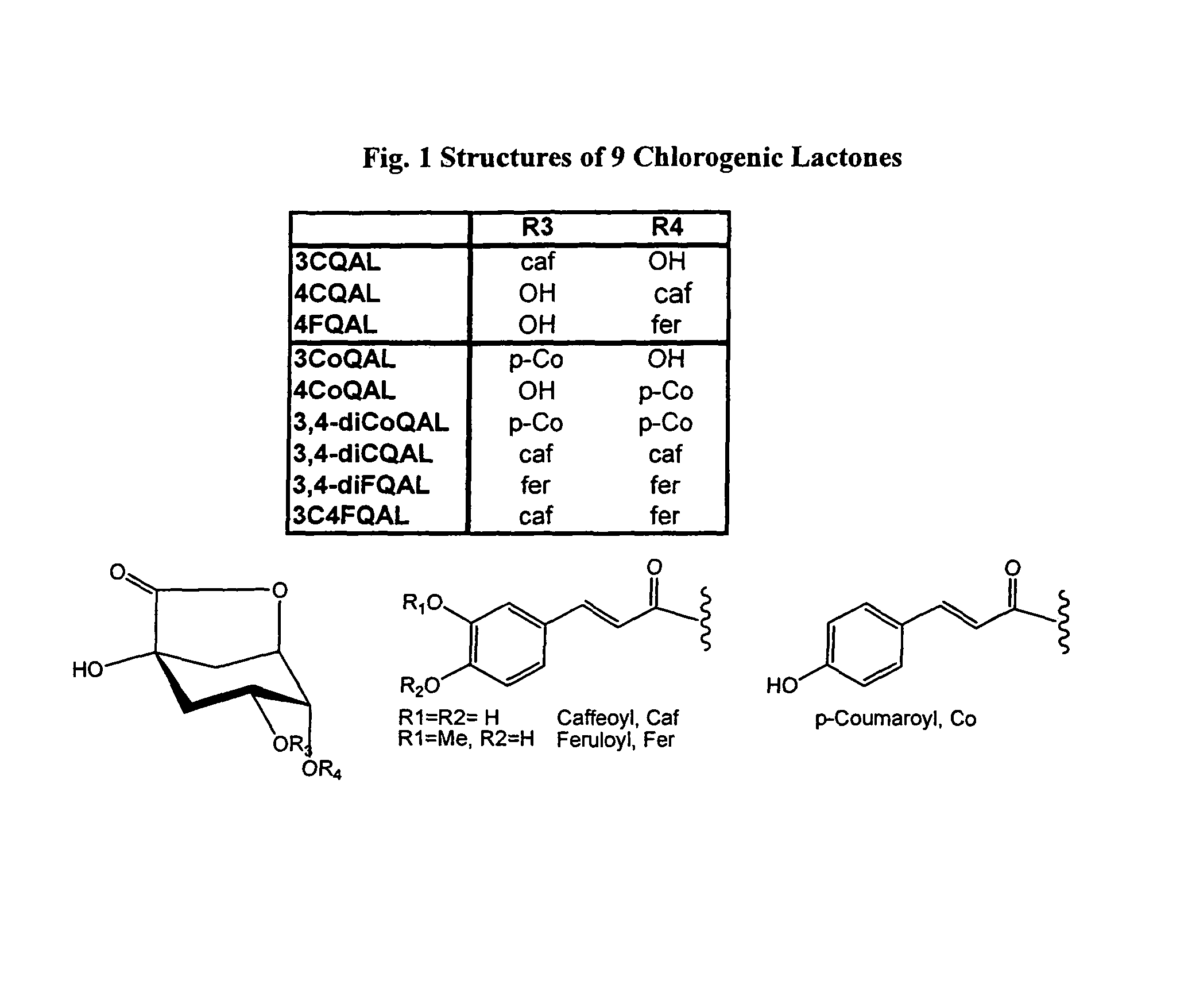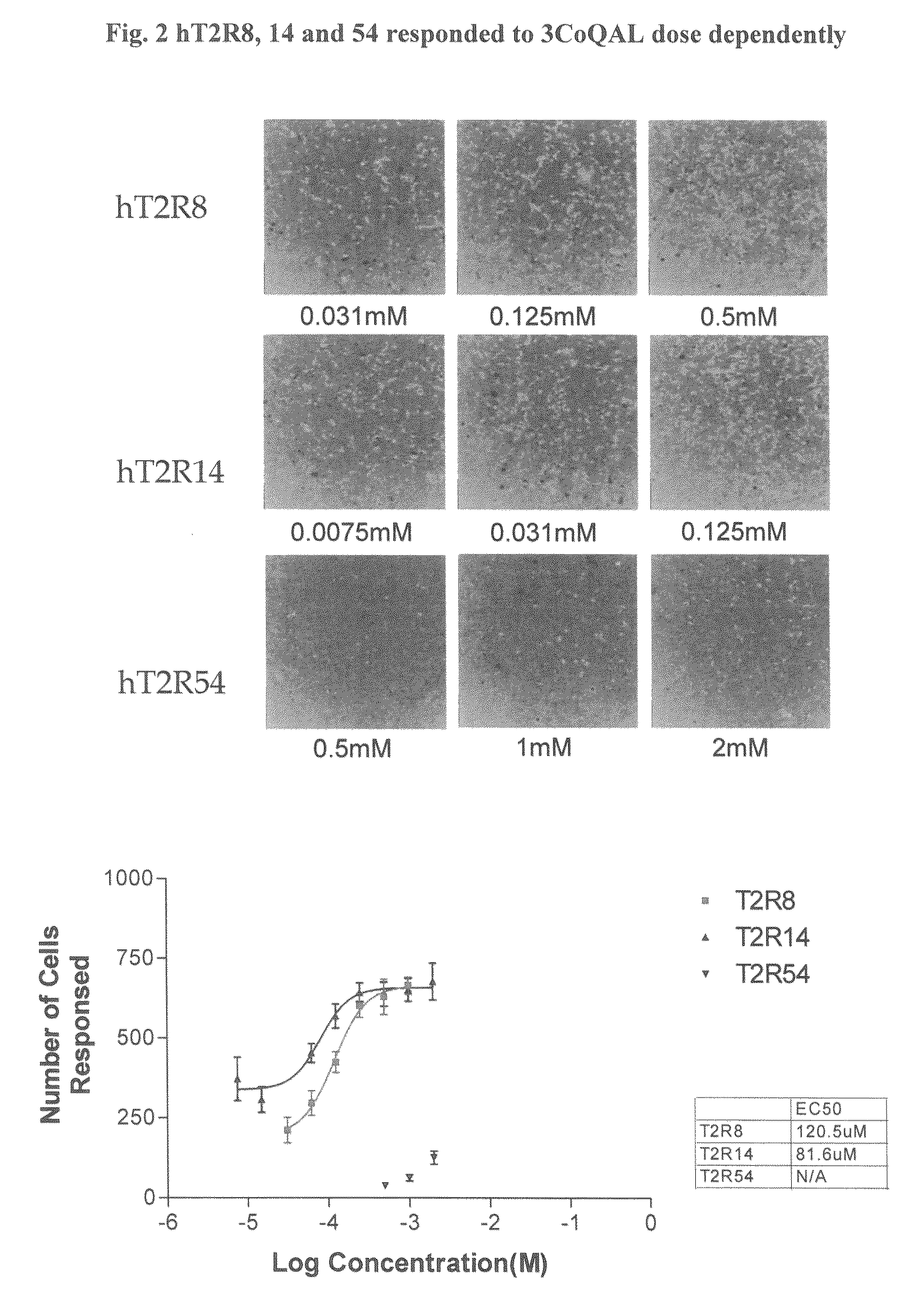Assays which screen for compounds that modulate bitter taste of chlorogenic lactone compounds
a chlorogenic lactone and compound technology, applied in the field of elucidation of bitter compounds, can solve the problems of insufficient expression of receptors in cultured mammalian cell lines, coffee elicits bitter aftertaste, and many coffees are not easily expressed for functional studies, so as to inhibit bitter taste
- Summary
- Abstract
- Description
- Claims
- Application Information
AI Technical Summary
Problems solved by technology
Method used
Image
Examples
example 1
[0175]In this example, we show that 3CoQAL, a bitter chlorogenic lactone compound, specifically activates hT2R8, hT2R14, and hT2R54 human bitter receptors having the DNA sequence contained in this application.
[0176]Activation of these receptors by 3CoQAL is measured in a cell-based assay detecting changes in intracellular calcium concentration. In brief, human embryonic kidney cells are seeded in 48-well tissue culture plates. 24 hours later, the cells are transiently transfected with plasmid containing either the hT2R8, hT2R14 or hT2R54 nucleic acid sequence, and plasmid containing a chimeric G protein (G16gust44). Another 24 hours later, the cells are incubated with a fluorescent dye specific for calcium (Fluo-4 or Fura-2; Molecular Probes) that provides a fast, simple and reliable fluorescence-based method for detecting changes in calcium concentration inside the cell. Activation of the T2Rs elicits a signaling cascade leading to the activation of PLC and a subsequent increase in...
example 2
[0177]In this example, we show that 3CQAL and 4CQAL, two bitter chlorogenic lactone compounds, specifically activate hT2R8, hT2R14 and hT2R54, human bitter receptors having the DNA sequences contained in SEQ ID NO: 2, 4 and 6 respectively in this application.
[0178]Activation of this receptor by 3CQAL and 4CQAL is measured in a cell-based assay detecting changes in intracellular calcium concentration. In brief, human embryonic kidney cells are seeded in 48-well tissue culture plates. 24 hours later, the cells are transiently transfected with plasmid containing either the hT2R8, hT2R14 or hT2R54 nucleic acid sequence, and plasmid containing a chimeric G protein (G16gust44). Another 24 hours later, the cells are incubated with a fluorescent dye specific for calcium (Fluo-4 or Fura-2; Molecular Probes) that provides a fast, simple and reliable fluorescence-based method for detecting changes in calcium concentration inside the cell. Activation of the T2Rs elicits a signaling cascade lead...
example 3
[0179]In this example, we show that 4FQAL, a bitter chlorogenic lactone compound, specifically activate hT2R8, hT2R14 and hT2R54, human bitter receptors having the DNA sequences contained in SEQ ID NO: 2, 4 and 6 respectively in this application.
[0180]Activation of this receptor by 4FQAL is measured in a cell-based assay detecting changes in intracellular calcium concentration. In brief, human embryonic kidney cells are seeded in 48-well tissue culture plates. 24 hours later, the cells are transiently transfected with plasmid containing either the hT2R8, hT2R14 or hT2R54 nucleic acid sequence, and plasmid containing a chimeric G protein (G16gust44). Another 24 hours later, the cells are incubated with a fluorescent dye specific for calcium (Fluo-4 or Fura-2; Molecular Probes) that provides a fast, simple and reliable fluorescence-based method for detecting changes in calcium concentration inside the cell. Activation of the T2Rs elicits a signaling cascade leading to the activation o...
PUM
| Property | Measurement | Unit |
|---|---|---|
| Tm | aaaaa | aaaaa |
| temperature | aaaaa | aaaaa |
| temperature | aaaaa | aaaaa |
Abstract
Description
Claims
Application Information
 Login to View More
Login to View More - R&D
- Intellectual Property
- Life Sciences
- Materials
- Tech Scout
- Unparalleled Data Quality
- Higher Quality Content
- 60% Fewer Hallucinations
Browse by: Latest US Patents, China's latest patents, Technical Efficacy Thesaurus, Application Domain, Technology Topic, Popular Technical Reports.
© 2025 PatSnap. All rights reserved.Legal|Privacy policy|Modern Slavery Act Transparency Statement|Sitemap|About US| Contact US: help@patsnap.com



